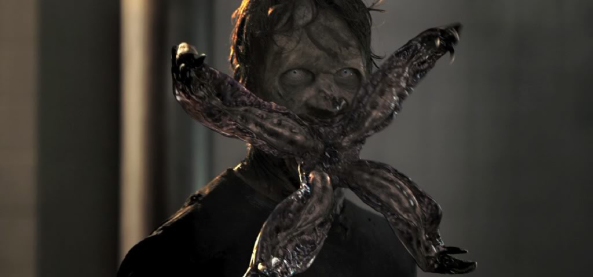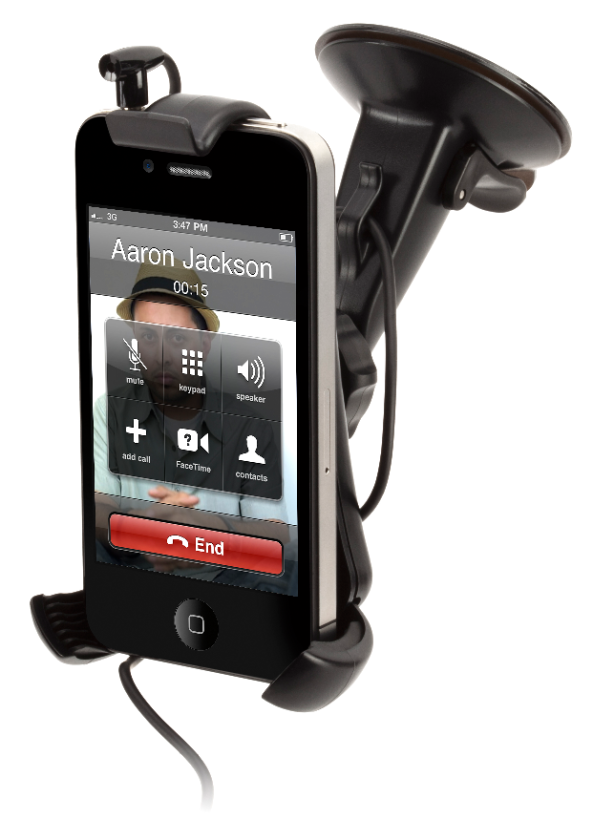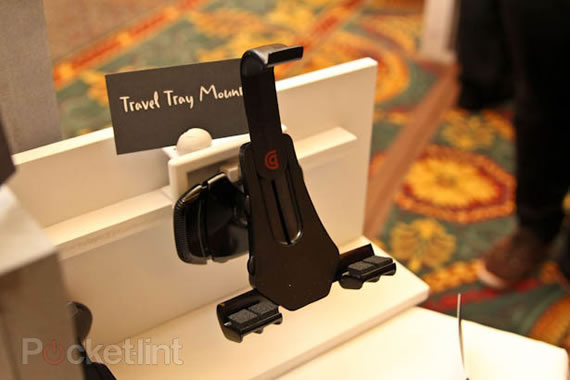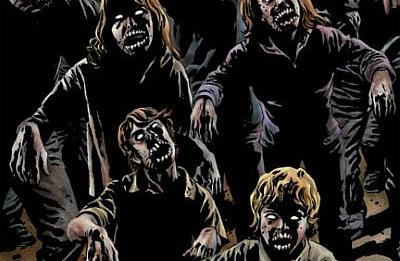In an earlier post of mine entitled A Geek Peek at 2012, one of the things I discussed, though briefly was the Zombie Apocalypse. In a comment to that post, someone stated that they didn’t understand the Zombie Apocalypse, so I figured I’d take the time to try and explain it to all those who may not be familiar with it.
The Zombie Apocalypse is defined as being a particular scenario of apocalyptic literature . In a zombie apocalypse, a widespread rise of zombieshostile to human life engages in a general assault on civilization.
In some stories of zombie apocalypse, victims of zombies may become zombies themselves if they are bitten or scratched by zombies; or if a zombie-creating virus travels by air, sexually, or via water source. In others, everyone who dies or has died in the past, whatever the cause, becomes one of the undead. In some cases, parasitic organisms can cause zombification by killing their hosts and reanimating their corpses, though some may argue that this is not a real or traditional zombie. In rarer cases, possession by a demonic spirit or demonic spirits (released through some ancient tome, rite, or incantation) has caused the long since dead and or the closest living being to become a zombie. In the latter scenario zombies also prey on the living though their bite may not always cause an infection that kills and reanimates. In either case, this can cause the outbreak to become an exponentially growing crisis: the spreading “zombie plague” swamps law enforcement organizations, the military as well as health care services; leading to the panicked collapse of civil society until only isolated pockets of survivors remain. Basic services such as piped water supplies and electrical power shut down, mainstream mass media would no longer function and the national governments of affected countries collapse or go into hiding. The survivors usually begin scavenging for food, weapons and other supplies in a world reduced to a mostly pre-industrial or possibly post apocalyptic, hostile wilderness.
Now fiction aside, there are reasons such an event could actually take place in the real world. Here are 5 reasons.. 5 scientific reasons backing up a Zombie Outbreak/Zombie Apocalypse:
5. Brain Parasites- A parasite is an organism that lives in or on another organism (its host) and benefits by deriving nutrients at the host’s expense. Brain Parasites are the same as any other sort of parasite, though they feed off of either chemicals produced by the brain, brain fluid, or other things related to the brain. In nature there are many parasites. One such being toxoplasma gondii. Toxoplasma gondii is the causative agent of the toxoplasmosis disease. In summary, extensive studies carried out under different experimental conditions suggest that T. gondii changes the behavior of rodents so as to make them more likely to be predated on by cats, the parasite’s definitive host.
From cracked.com Chances this could cause a zombie apocalypse:
“Humans and rats aren’t all that different; thats why they use them to test our drugs. All it takes is a more evolved version of toxoplasmosa, one that could to do us what it does to the rats. So, imagine if half the world suddenly had no instinct for self-preservation or rational thought. Even less than they do now, we mean. If you’re comforting yourself with the thought that it may take forever for such a parasite to evolve, you’re forgetting about all the biological weapons programs around the world, intentionally weaponizing such bugs. You’ve got to wonder if the lab workers don’t carry out their work under the unwitting command of the toxoplasmosa gondii already in their brains. If you don’t want to sleep at night, that is.”


4. Neurotoxins- Poisons that act on the nervous system. Certain neurotoxins can slow your bodily functions to the point that you’d be considered dead. The poison from fugu (Japanese blowfish) has the capability to do this. The victims of neurotoxin poisoning can then be brought back under the effects of a drug like datura stramonium or alkaloids that leave them in a trance-like state with no memory. In this state they are still able to perform simple tasks like eating, sleeping, moaning and shambling around with their arms outstretched.
There are reported cases of this actually happening in Haiti, which is where the word “zombie” comes from. Some of the most famous books on the subject are by Dr. Edmund Wade Davis: “Passage of Darkness” & “The Serpent and the Rainbow” Clairvius Narcisse was declared dead on 2 May 1962, and yet in 1980 returned alive to his home village of L’Estère in Haiti. After investigating reports of “zombis” (including Narcisse and a handful of others), researchers believed that Narcisse received a dose of chemical mixture containing Tetrodotoxin (pufferfish venom) and bufotoxin (toad venom) to induce a coma which mimicked the appearance of death. He was then allowed to return to his home where he collapsed, “died” and was buried. Ethnobotanist Wade Davis, who did the research on Tetrodotoxin explains that a Bokor would have given Narcisse a powder containing the Tetrodotoxin through abraded skin. Narcisse fell into a comatose state, closely resembling death which resulted in his live burial. His body was then recovered and he was given doses of Datura stramonium to create a compliant zombie-like state and set to work on a plantation. After two years, the plantation owner died and Narcisse simply walked away to freedom. Though there is no way to necessarily make this sort of zombie aggressive or cannibalistic; if such a thing was able to happen and on a wide enough scale.. we would certainly have a zombie problem.

3. Rage- A feeling of intense anger. It is associated with the Fight-or-flight response and oftentimes activated in response to an external cue, such as the murder of a loved one. The phrase, ‘thrown into a fit of rage,’ expresses the immediate nature of rage that occurs before deliberation. If left unchecked rage may lead to violence. Depression and anxiety lead to an increased susceptibility to rage.
In the movies 28 Days Later & 28 Weeks Later, the Rage Virus is a virus that turned human beings into mindless killing machines and is the cause for the zombie outbreak and subsequently the Zombie Apocalypse. Now, while the rage virus may not exist in the real world, we do have a series of brain disorders that do the same thing. They were never contagious, of course. Then, Mad Cow Disease came along. It attacks the cow’s spinal cord and brain, turning it into a stumbling, mindless attack cow. Combine the Mad Cow Disease with some people’s predisposition towards violence and there you have it.

2. Neurogenesis- The process by which neurons are generated from neural stem and progenitor cells. Most active during pre-natal development, neurogenesis is responsible for populating the growing brain with neurons. Some would even word it as being the method by which dead brain-tissue can be regrown.
Science can pretty much save you from just about anything but brain death; they can swap out organs but when the brain turns to mush, you’re basically dead. Right? Well apparently a dead body can be kept in a state of suspended animation to be brought back later. That just seems like it’s leading to bringing the dead back to life.. as long as they’re freshly dead. ya know.?. As nice as it sounds to have your loved one brought back from death’s very doorstep, the process of “reanimation” could cause a problem. The brain would die from the outside in. The outside of the brain, being the cortex, the part which makes people…. people. That would basically leave an individual a husk of their former self. Though the cortex isn’t needed for survival, you would be left a mindless shambling…zombie(for lack of a better word.). Take one freshly dead person, use the techniques of neurogenesis to regrow the dead brain-tissue or the brain stem and you have a living dead person, devoid of thought or personality. All it takes is someone with considerable time, resources, and a need for a totally mindless workforce to obey their every wish.

1. Nanobots- Very small self-propelled machines, esp. ones that have some degree of autonomy and can reproduce. Basically they’re microscopic machines that can build or destroy anything.. in a matter of speaking.
Scientists have already created a nano-cyborg, by fusing a tiny silicone chip to a virus. One of the first things they found out was that these cyborgs can still operate for up to a month after the death of the host. Who knows…within a decade they may have nanobots that can crawl inside your brain and set up neural connections to replace damaged ones; rewiring your thoughts. Ask yourself…what could possibly go wrong with that? Nanobots in your brain after you’re dead… keeping your body moving and functioning and moving till there’s nothing left to move. The nanobots would be programmed to self-replicate of course, and the death of the host would mean the end of the nanobots. In order to preserve themselves, they’d be forced to transfer to a new host. Therefore, the last act of the nanobot infested zombie would be to bite a hole in a healthy victim, letting the nanobots steam in and start the whole process all over again in the new host. Once in, they could shut down the part of the brain that resists (the cortex) and leave the brain stem intact. They would have added a new member to their undead ranks.


There you have it. Science has proven the possibility, feasibility, and the reality(No matter how unlikely it may be.) of a zombie outbreak.
All that’s left is surviving a Zombie Outbreak/Zombie Apocalypse. Good Luck.



















